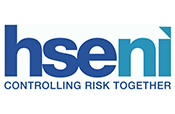Diseases, infections and allergies in the workplace
Managing risks from diseases and infections in the workplace
If your workers are exposed to risks of infection you may need to consider some of the most serious risks:
- Hepatitis
- HIV
- Tuberculosis
Reducing risks of infection
A first step is to go through your processes to see if there are ways of reducing risks. For example:
- Can processes that might lead to contact with body fluids or other infectious materials always be carried out in areas that are easy to clean? Can the right protective equipment be easily at hand?
- Can you avoid using sharp instruments such as needles, glass or metal? If not do you have sharps disposal containers readily available?
- Do you provide gloves or other protective equipment?
- Do all staff have access to clean toilet and hand washing facilities for their own use?
Assessing specific groups for infection risk
Your assessment of infectious risks should consider risks to:
- yourself
- your employees
- any clients or other visitors to your workplace
Do you need to make provisions for anyone who is particularly at risk to infection? This might include people who are old, ill, young or pregnant.
You and your employees may well pick up infections from one another in the same way as you might from friends and family outside work. Infections that are just as likely to be caught outside the workplace as in it are not your responsibility under health and safety law.
Taking action to prevent infection
Once you have done your risk assessment you should implement safe working practices. If the risk is low and you have only a few employees (eg a small hairdressing salon) this will involve some very simple steps to ensure everyone has the right information. If you work in healthcare or other businesses where the risks of infection are high, you will need to ensure employees are trained and competent for the work they do and follow safe procedures.
- HSENI Helpline0800 032 0121
